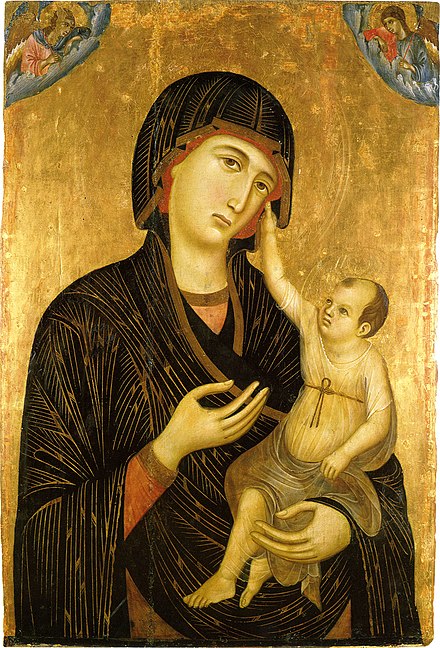
Painting is a visual art, which is characterized by the practice of applying paint, pigment, color or other medium to a solid surface (called the "matrix" or "support"). The medium is commonly applied to the base with a brush, but other implements, such as knives, sponges, and airbrushes, may be used. One who produces paintings is called a painter.
In art, the term "painting" describes both the act and the result of the action (the final work is called "a painting"). The support for paintings includes such surfaces as walls, paper, canvas, wood, glass, lacquer, pottery, leaf, copper and concrete, and the painting may incorporate multiple other materials, including sand, clay, paper, plaster, gold leaf, and even whole objects.
Painting is an important form of visual art, bringing in elements such as drawing, composition, gesture, narration, and abstraction. Paintings can be naturalistic and representational (as in still life and landscape painting), photographic, abstract, narrative, symbolistic (as in Symbolist art), emotive (as in Expressionism) or political in nature (as in Artivism).
A portion of the history of painting in both Eastern and Western art is dominated by religious art. Examples of this kind of painting range from artwork depicting mythological figures on pottery, to Biblical scenes on the Sistine Chapel ceiling, to scenes from the life of Buddha (or other images of Eastern religious origin). (Full article...)














.JPG/440px-CARRACCI,_Annibale_-_An_allegory_of_Truth_and_Time_(1584-5).JPG)




During the Song dynasty, some landscapes of Mu Qi's paintings on the Xiao and Xiang rivers exhibit many of its characteristics, and were highly praised in Japan. It was with Yu Jian (玉澗) in China when we have the first paintings in the style, for example Evening Market. In Japan, these styles of painting were spread by the Japanese painter Sesshū Tōyō. Later, the Kano school of painting also made many paintings in this style. (Full article...)Whenever he wanted to paint a picture, Wang Mo would first drink wine, and when he was sufficiently drunk, would splash the ink onto the painting surface. Then, laughing and singing all the while, he would stamp on it with his feet and smear it with his hands, besides swashing and sweeping it with the brush. The ink would be thin in some places, rich in others; he would follow the shapes which brush and ink had produced, making these into mountains, rocks, clouds and mists, wash in wind and rain, with the suddenness of Creation. It was exactly like the cunning of a deity; when one examined the painting after it was finished he could see no traces of the puddles of ink.



.jpg/440px-Creación_de_Adán_(Miguel_Ángel).jpg)









Do you have a question about Painting that you can't find the answer to?
Consider asking it at the Wikipedia reference desk.
For editor resources and to collaborate with other editors on improving Wikipedia's Painting-related articles, see WikiProject Painting.
The following Wikimedia Foundation sister projects provide more on this subject: